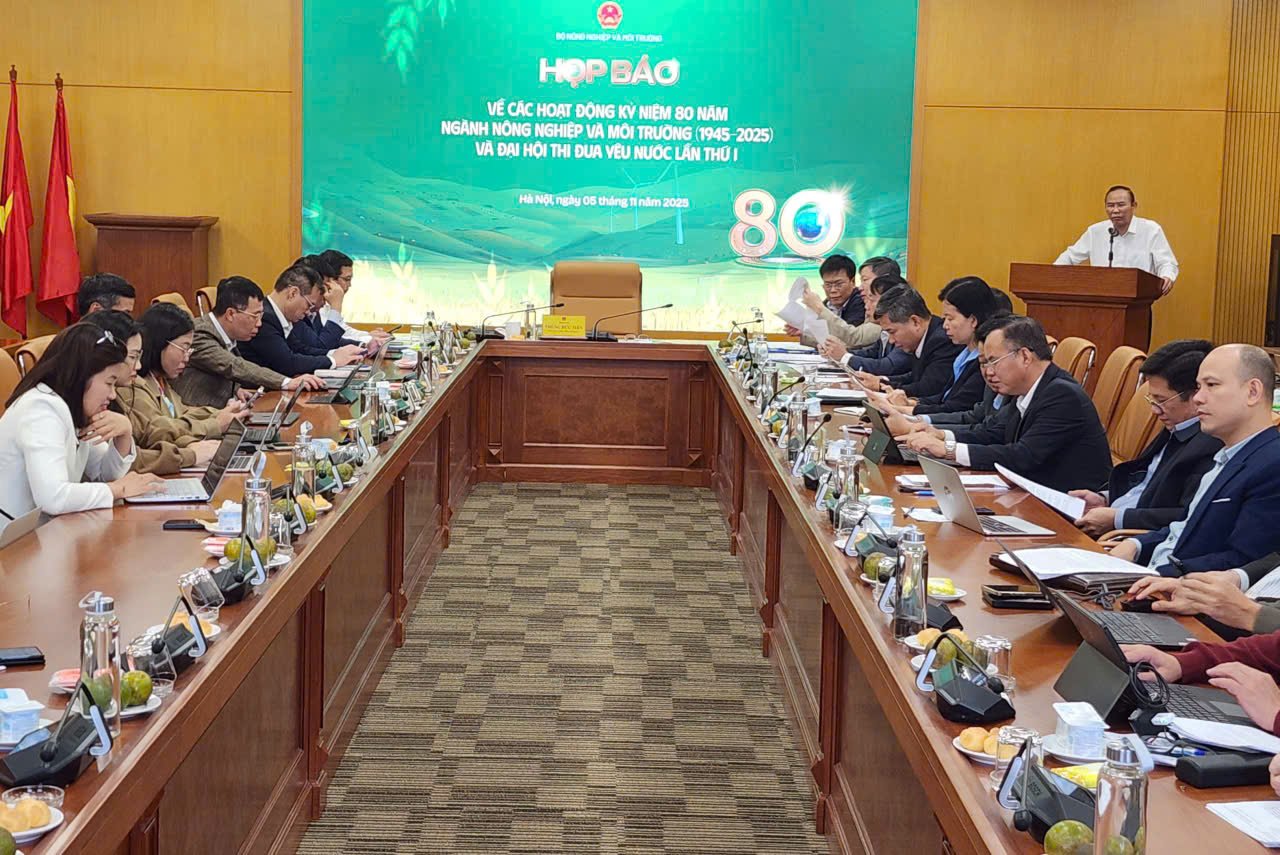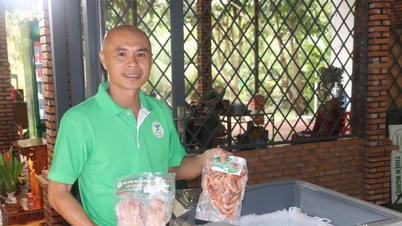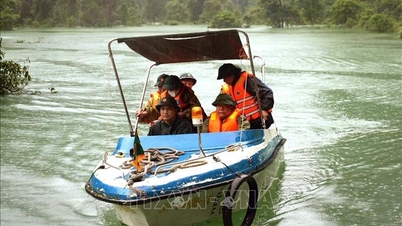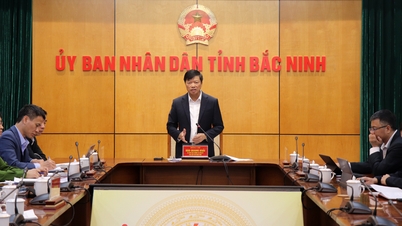On November 5, at the press conference on activities to celebrate the 80th anniversary of the Agriculture and Environment sector (1945-2025) and the first patriotic emulation congress, Mr. Gia Long - Deputy Director of the Finance Department of the Ministry of Agriculture and Environment, outlined the picture of the sector in the first 10 months of 2025.
Accordingly, the extreme weather in October 2025 has caused many difficulties for localities. Consecutive storms and rains in the North and Central regions have affected crop production, livestock farming and aquaculture. Currently, localities are urgently overcoming the consequences of storms and floods, quickly restoring production and stabilizing the lives of people in affected areas.

In terms of cultivation, localities focused on harvesting the Summer-Autumn and Autumn-Winter rice crops, and planting winter crops on schedule. By the end of October 2025, the cultivated rice area reached about 7.1 million hectares, a slight decrease compared to the same period, but the output on the harvested area still reached about 39 million tons, ensuring domestic food supply. Vegetable and short-term crop growing areas were also given priority to be restored to meet consumer demand and the year-end market.
Livestock production continues to recover after many fluctuations, especially for the pig herd. After the African swine fever epidemic, production is gradually stabilizing, although the growth rate is not high due to cautious sentiment of the people and unfavorable weather conditions. Meanwhile, the poultry herd continues to grow steadily thanks to effective disease control and increased domestic consumption demand in the last months of the year.
The forestry sector has maintained good progress over the past 10 months. Forest planting, care and protection have been implemented synchronously according to the plans of localities. The newly planted forest area reached nearly 236,600 hectares, while the timber exploitation output was about 20.5 million m3, contributing to ensuring the source of raw materials for the forest product processing and export industry.
Aquaculture continues to play an important role in the food supply chain and export turnover. Although fishing activities at sea were limited due to bad weather, the total output of the aquaculture industry in 10 months still reached more than 8.15 million tons, an increase compared to the same period last year. Pangasius and brackish water shrimp farming maintained efficiency, meeting both domestic demand and export processing, creating momentum for growth at the end of the year.
Continue to restore production and maintain growth momentum
The biggest highlight of the industry in October 2025 was that export activities continued to grow strongly. The export turnover of agricultural, forestry and fishery products in the month was estimated at 5.96 billion USD, up 6.3% over the same period last year. In the first 10 months of the year, this figure reached 58.13 billion USD, up 12.9%. These positive results contributed significantly to stabilizing the macro economy and creating jobs for people in agricultural production localities.
In the export structure, agricultural, aquatic and livestock product groups all recorded significant growth in value. Many key product lines had outstanding results thanks to improved selling prices and expanded consumption markets. Coffee, vegetables, cashew nuts and pepper continued to be among the leading groups in terms of turnover.

The fruit and vegetable sector alone reached 7.09 billion USD in 10 months, showing that the world market demand for Vietnamese agricultural products is still very large. Aquaculture also contributed 9.31 billion USD, affirming the ability to maintain supply chains and quality standards in the context of fierce global market competition. These results reflect the efforts of management agencies, businesses and farmers to increase product value.
Export markets are mainly concentrated in Asia, accounting for nearly half of the industry's total turnover; followed by America and Europe. Of which, China, the United States and Japan are the three largest partners. In addition to maintaining traditional markets, many new markets have also grown positively, helping the agricultural sector expand its output and reduce its dependence on a number of key markets.
Regarding imports, in October it reached 4.04 billion USD. In the 10 months, the cumulative import turnover reached over 40.54 billion USD, up 11.5%. Raw materials for export processing increased sharply according to the scale of domestic production. Asia and America are the two leading supply regions, of which China and the United States account for a large proportion.
The Ministry of Agriculture and Environment assessed that maintaining stable production in the context of natural disasters and increasing exports is an important success of the whole industry. Localities are requested to focus on overcoming the consequences of storms and floods, ensuring food supplies and supporting people to restore production in a timely manner.
The agricultural sector continues to aim for the goal of both ensuring national food security and stably developing key export industries. The focus in the coming time is to improve product quality, expand markets, promote deep processing and increase value. This is the foundation for the agricultural and environmental sectors to continue to affirm their pivotal role in socio-economic development, contribute to stabilizing people's lives and move towards important milestones in 2025.
Source: https://baotintuc.vn/kinh-te/xuat-khau-nganh-nong-nghiep-khoi-sac-giu-vung-vai-tro-tru-cot-kinh-te-20251105101937502.htm




![[Photo] Opening of the 14th Conference of the 13th Party Central Committee](https://vphoto.vietnam.vn/thumb/1200x675/vietnam/resource/IMAGE/2025/11/05/1762310995216_a5-bnd-5742-5255-jpg.webp)

































![[Photo] Panorama of the Patriotic Emulation Congress of Nhan Dan Newspaper for the period 2025-2030](https://vphoto.vietnam.vn/thumb/1200x675/vietnam/resource/IMAGE/2025/11/04/1762252775462_ndo_br_dhthiduayeuncbaond-6125-jpg.webp)












































































Comment (0)